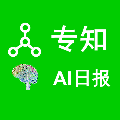The prevailing paradigm for producing semantic segmentation training data relies on densely labelling each pixel of each image in the training set, akin to colouring-in books. This approach becomes a bottleneck when scaling up in the number of images, classes, and annotators. Here we propose instead a pointillist approach for semantic segmentation annotation, where only point-wise yes/no questions are answered. We explore design alternatives for such an active learning approach, measure the speed and consistency of human annotators on this task, show that this strategy enables training good segmentation models, and that it is suitable for evaluating models at test time. As concrete proof of the scalability of our method, we collected and released 22.6M point labels over 4,171 classes on the Open Images dataset. Our results enable to rethink the semantic segmentation pipeline of annotation, training, and evaluation from a pointillism point of view.
翻译:生成语义分解培训数据的普遍范例依赖于对培训组中每张图像的每个像素进行与彩色书籍相似的密集标记。 当扩大图像、类和批注器的数量时, 这种方法会成为一个瓶颈。 我们在这里建议使用一个点分类法进行语义分解注解, 即只回答点- 是/ 不问题 。 我们为这种积极的学习方法探索设计替代方法, 测量人类告示员在这项任务上的速度和一致性, 表明这一战略能够培训良好的分解模型, 并且适合在测试时评价模型。 作为我们方法可缩放性的具体证明, 我们收集并发布了在开放图像数据集上超过 4, 171个课的22.6M点标签。 我们的结果能够重新思考笔记、 培训和评估的语义分解管道 。





